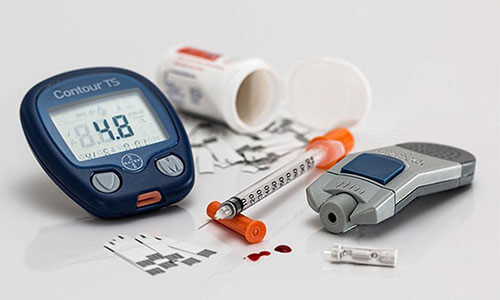
Depending on your age, you have a different relationship to the concept of diabetes. If you’re in your 50s or 60s, you’ve spent most of your life thinking of it as a disease of excess that you’re at a greater risk of developing in late middle age. If you led a life of little activity and a high sugar diet, there’s a chance you could develop it and it would change your life for its duration. Well, that might have been your thought process when you were younger. Now, diabetes seems to be everywhere.
If you’re in your 20s or 30s, you are acutely aware of diabetes as something that could strike at any time. You probably have friends with the condition. It is no longer considered an old person’s disease. It’s now accepted as one of the most common chronic conditions in America.
In the last 60 years, diabetes diagnoses have skyrocketed. In 1958, only about 1.6 million people in the U.S. had the disease. That was less than 1% of the population. By 2015, that had jumped up to 23.4 million people and 7.4% of the population. Estimates have it at about 8% by now. Shockingly, more children under 18 than ever are being diagnosed with diabetes. As our population begins to live to longer ages, the incidences of diabetes will only rise.
There’s a good chance if you’re reading this that you or someone close to you has been diagnosed with diabetes. Hearing that you have developed a lifelong condition can be disheartening to say the least. But diabetes can be managed and you can lead a relatively normal and long life if you address it properly. Diabetes doesn’t have to control your life. Here is what you need to know.
It’s important to note that there are three different kinds of diabetes: Type I, Type 2, and gestational.
Type 1 diabetes is a condition you are often born with. If not diagnosed early on, it’s usually caught in young adulthood. With Type 1, your body doesn’t produce enough insulin so you need to take insulin injections or, if your doctor recommends it, have an insulin pump installed.
Type 2 diabetes, the far more common type and the one most on the rise, is insulin resistance. This is the type that traditionally developed in old age, but with high sugar diets, obesity, and sedentary lifestyles becoming more of the norm, younger people are developing it at a fast rate.
Gestational diabetes occurs during some pregnancies for a variety of reasons. It needs to be managed, but usually resolves once you give birth. However, it’s important to note it raises the risk of developing type 2 diabetes later on in life.
In the early stages, there are few noticeable symptoms. However, as the disease progresses you may notice symptoms like fatigue, weight loss, extreme thirst and urination (including the need to urinate while sleeping), blurred vision, tingling in extremities, and slow healing wounds.
With the proper management, you should be able to get these symptoms under control. However, unchecked these symptoms can develop into more serious conditions.
Unmanaged diabetes can cause havoc on the body. Diabetes is a leading cause of blindness. As the disease progresses, the small blood vessels in the eyes degrade. It’s also a leading cause of amputation. Because your circulation gets so compromised, your blood flow can’t reach. This is why people with advanced diabetes often lose a foot. The condition also causes cardiovascular issues and can raise the chances of stroke or heart attack. Renal failure is a leading cause of diabetes related fatalities.
Everyone is different when it comes to managing diabetes. But, it’s always a multi-step process. First, you need to be evaluated for how much the disease has progressed. While we often associate insulin injections with type 1 diabetes, plenty of people with type 2 receive them as well. The real key will be lifestyle changes. Keeping your blood sugar down is the main objective. Dietary changes will need to be followed. Low GI foods that don’t spike blood sugar and low-fat foods with an increase in vegetables can help. Also, a regular exercise regimen will need to be followed to not only combat high blood sugar, but get your weight down. Obesity accounts for 90% of diabetes diagnoses.
Diabetes can be managed, but it takes professional treatment you can trust along with lifestyle changes. It can be done. If you’ve been diagnosed with diabetes and you’re looking for help managing your condition, contact us today. The team at Pure Medicine is here to provide you with the care you need so you can lead a healthier, longer life. Schedule an appointment and begin the process of managing your condition.
Pure Medicine
4645 Avon Lane, Suite 200
Frisco, TX 75033
Phone:
(469) 414-9660